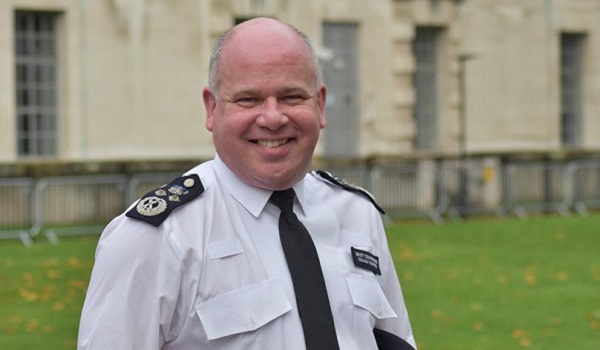One tenth of domestic abuse cases involve grown-up children attacking parents
One in ten cases of domestic abuse involve grown-up children attacking their own parents, new research suggests.
The study, which was funded by the Home Office and conducted by the University of Central Lancashire in partnership with Lancashire Constabulary and the Lancashire Violence Reduction Network, investigated 26 months of domestic abuse cases from November 2018 to February 2021 and found that of the 66,973 cases reported, 7,171 were committed by people over the age of 16 towards a parental figure.
While the study focuses on cases reported to Lancashire Constabulary, the researchers stated there is no reason to assume the data is unique to the county and is likely to be broadly representative of child to parent domestic abuse case figures nationally.
Professor of Criminal Justice Psychology and lead author of the research paper Nicola Graham-Kevan said: “Previous research around child to parent domestic abuse has focused primarily on adolescent perpetrators. However, this research suggests that it is not just adolescents that abuse their parents, and instead our findings uncovered perpetrators aged between 16 and 74 years with victims aged between 30 and 98 years. The average age of perpetrators was 27 years, while the average age of the victim was 54 years”
The researchers said the lack of information on parental abuse by older children means the police are forced to use assessments such as the DASH (Domestic Abuse, Stalking and Harassment) tool, which may not be appropriate in cases where the perpetrator is the victim’s child. As a result, some higher-risk cases are not being identified and some lower-risk cases are being dealt with by the criminal justice system, despite there being other approaches that could prove better for the victim.
Dr Nathan Birdsall, research fellow in policing at UCLan and co-investigator on the project, said: “We expect that this figure of ten per cent will be reflected nationally and in fact, the reality is that the percentage may be much higher.
“Many instances of child to parent domestic abuse are unlikely to be reported because the victim does not want to criminalise their child, may feel that it makes them look like a bad parent, they feel embarrassed or guilty about reporting, or they may rely on their child to provide and care for them. As with all domestic abuse, reasons for not reporting are complex but critically important so we understand how victims seek help.
“This is especially important given that there has been a significant increase in both the age children typically leaving the family home, and the number of older adults acting as care givers to elderly relatives. Understanding domestic abuse within a wider family setting is needed now more than ever.”
The research also found that there appears to be different profiles of perpetrators, suggesting that there is a gap in the understanding of the range of dynamics, risk factors and causes of this kind of abuse. Where some perpetrators used intimidating behaviour and coercive control and caused the victims significant fear, other incidents appeared to centre around children struggling with substance use, whereas others may be better understood as carer burnout.
In around a quarter of the cases, perpetrators appeared to struggle with their mental health and diagnosis, or behaviour consistent with, autism, ADHD, depression, schizophrenia and psychosis, and emotionally unstable personality disorders were likely an important factor.
The problem may also be on the rise due to changes in national demographics. The Office for National Statistics Labour Force Survey 2021 found that the number of people aged 20-34 years living with their parents since 1996 has risen by a third and by March 2020, this equated to 28 per cent of people within this age group sharing a home with their parents, grandparents, or step-parents.
Detective Chief Superintendent Sue Clarke, head of the Lancashire Violence Reduction Network, said: “This piece of research is particularly important as it provides insight for support service providers and the general public into one of the lesser understood forms of domestic abuse. I look forward to the second phase, which has a focus on profiling offenders to gain a deeper understanding of the circumstances and other factors that lead to people over the age of 16 abusing a parental figure.”
Michelle John, Founding Director of PEGS, a social enterprise supporting parents and professionals with child to parent abuse (CPA), said: “While the findings of the research are not something to be celebrated, we are pleased to see awareness of CPA being raised by the researchers at the University of Lancashire and their partners, to shine a light on this often hidden form of domestic abuse.
“It’s only by truly understanding the scale and nature of CPA that society, statutory services, and individual professionals can effectively support the parents, carers and guardians for whom abuse and violence from their child is sadly an everyday reality.
She added: “Twenty-one per cent of the parents we support experience physical attacks daily, with a further 41 per cent being attacked at least once a week. Other siblings – and even pets – are often targets too.
“It’s only by undertaking much more research, by upskilling and training frontline professionals, and by reassuring parents that they can talk about the abuse they are experiencing without fear of blame or judgment, that we can begin to bring CPA out of the shadows.
“It must be recognised as a serious and under-reported form of domestic abuse which has a profound impact on individuals, families, and communities.”
The full report, Understanding child to parent domestic abuse in Lancashire, is available to download here.







